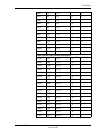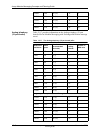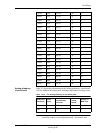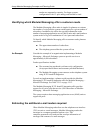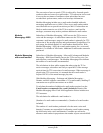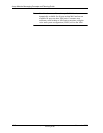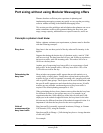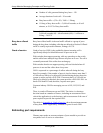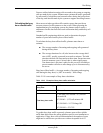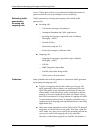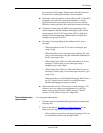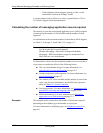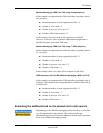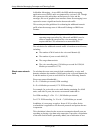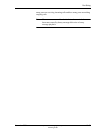
Port Sizing
November 2004
Avaya Modular Messaging Concepts and
Planning Guide
12-23
Ports are utilized when incoming calls are made to the system or outgoing
calls are made by the system. Planners must estimate the traffic generated
by calls made by subscribers and external callers during the busiest hour
of the day, and outcalls made by the system to support outcalling features.
Calculating the busy
hour offered traffic
Most newer switches provide traffic statistic reports that provide an
accurate picture of traffic patterns on the switch. When preparing the
implementation of a messaging system, the planner needs to study a
minimum of traffic data from one week to determine daily and hourly call
volumes.
Standard traffic-engineering tables are used to determine the proper
number of ports based on busy hour offered traffic.
To calculate the busy hour offered traffic, planners must know or
estimate:
! The average number of incoming and outgoing calls generated
during the busy hour.
! The average duration of a call, also known as the average hold
time (AHT), usually expressed in seconds or minutes. The hold
time must include call setup and tear-down time. Setup time starts
from the moment a port is seized, that is, when ringing starts.
Tear-down time is the time it takes for the port to be available to
process another call after a caller hangs up or is disconnected by
the server.
Busy hour offered traffic = (Average number of incoming and outgoing
calls during the busy hour) x (AHT in seconds) / 3600 erlangs
Table 12-19 is an example of busy hour calculation:
To predict busy hour traffic accurately, planners must collect reliable
traffic data that reflects the calling patterns specific to an installation or
application. If busy hour calls are underestimated, the number of ports
might not be sufficient to provide users with an acceptable level of
Table 12-19. Example of busy hour traffic calculation
Calls generated during
busy hour
1500
AHT of a call
45 seconds
Total busy hour traffic
1,500 calls x 45 seconds = 67,500 call
seconds OR
67,500/60 = 1,125 call minutes OR
67,500/3600 = 18.75 Erlangs OR
67,500/100 = 675 CCS



